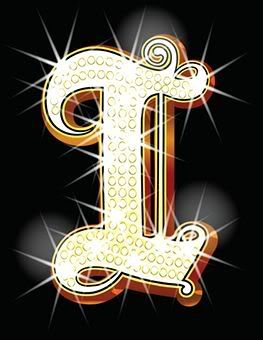             |
||||
 For BFINAN2 Students a. Blue Chip Stocks - Stock of a large, national company with a solid record of stable earnings and/or dividend growth and a reputation for high quality management and/or products. Examples are San Miguel Corporation Stocks, PLDT Stocks b. Growth Stocks - Stock of a company which is growing earnings and/or revenue faster than its industry or the overall market. Such companies usually pay little or no dividends, preferring to use the income instead to finance further expansion. Examples are Paxy's, Inc. Stocks c. Defensive Stocks - A stock that tends to remain stable under difficult economic conditions. Defensive stocks include food, tobacco, oil, and utilities. These stocks hold up in hard times because demand does not decrease as dramatically as it may in other sectors. Defensive stocks tend to lag behind the rest of the market during economic expansion because demand does not increase as dramatically in an upswing. Examples are Meralco Stocks d. Preferred Stocks - Capital stock which provides a specific dividend that is paid before any dividends are paid to common stock holders, and which takes precedence over common stock in the event of liquidation. Like common stock, preferred stocks represent partial ownership in a company, although preferred stock shareholders do not enjoy any of the voting rights of common stockholders. Also unlike common stock, a preferred stock pays a fixed dividend that does not fluctuate, although the company does not have to pay this dividend if it lacks the financial ability to do so. The main benefit to owning preferred stock is that the investor has a greater claim on the company’s assets than common stockholders. Preferred shareholders always receive their dividends first and, in the event the company goes bankrupt, preferred shareholders are paid off before common stockholders. In general, there are four different types of preferred stock: cumulative preferred, non-cumulative, participating, and convertible. ***refer to your books regarding the basic types of preferred stocks*** 1.Dividend Yield 2.Capital Gains **refer to your books regarding the definition and examples**
 For BFINAN2 Students Equity Securities 1. Authorized - The maximum number of shares of stock that a company can issue. It's specified initially in the company's charter, but it can be changed with shareholder approval. It is also called authorized shares or shares authorized. 2. Issued - Issued shares include the stock a company sells publicly in order to generate capital and the stock given to insiders as part of their salaries. Issued shares do not include shares the corporation holds in its treasury stock or shares that are retired by the corporation after repurchase. The amount of issued shares can be all or part of the total amount of authorized shares of a corporation. 3. Treasury - Treasury stock is created when a company does a share buyback and purchases its shares on the open market. This can be advantageous to shareholders because it lowers the number of shares outstanding. 4. Outstanding - Stock currently held by investors, including restricted shares owned by the company's officers and insiders, as well as those held by the public. Shares that have been repurchased by the company are not considered outstanding stock. 1. Par Value - This is face value of the stock. 2. Stated Value - A value that, instead of being par value, is assigned to a corporation's stock for accounting purposes. Stated value has no relation to market price. A stock without a par value has no stated value, allowing the corporation to issue it for any amount per share that the board of directors determines to be appropriate. 3. Book Value - Book value is the accounting value of a firm. It has two main uses: (1)It is the total value of the company's assets that shareholders would theoretically receive if a company were liquidated;(2) By being compared to the company's market value, the book value can indicate whether a stock is under- or overpriced; and (3)In personal finance, the book value of an investment is the price paid for a security or debt investment. When a stock is sold, the selling price less the book value is the capital gain (or loss) from the investment. 4. Market Value - this is the price at which someone is willing to pay for each share of stock. 1. Common Stocks - These are securities representing equity ownership in a corporation, providing voting rights, and entitling the holder to a share of the company's success through dividends and/or capital appreciation. In the event of liquidation, common stockholders have rights to a company's assets only after bondholders, other debt holders, and preferred stockholders have been satisfied. 2. Preferred Stocks - Capital stock which provides a specific dividend that is paid before any dividends are paid to common stock holders, and which takes precedence over common stock in the event of a liquidation. Like common stock, preferred stocks represent partial ownership in a company, although preferred stock shareholders do not enjoy any of the voting rights of common stockholders. Also unlike common stock, a preferred stock pays a fixed dividend that does not fluctuate, although the company does not have to pay this dividend if it lacks the financial ability to do so. The other topics will be discussed in class. Whatever we can't discuss on Monday will be posted here.
 FOR BMGMNT6 STUDENTS Due to time constraints, I have uploaded your notes on some topics. I will be uploading the other notes before Saturday. Be sure to have your own copy of the notes I have uploaded. click here for your notes.
|

- college instructor  
 

EARN EXTRA!       
Find more freelance jobs

University of Baguio Friendster eMP3.com My Space Tristan Cafe 43 Things all business yellow pages Philippine Stock Exchange Department of Trade and Industry investopedia SME.COM TQM Chan-Robles Inquirer Online pugad baboy comics 
October 2005 November 2005 December 2005 January 2006 February 2006 March 2006 April 2006 May 2006 July 2006 September 2006 October 2006 May 2007 June 2007 April 2008 September 2008 October 2009 November 2009 December 2009 January 2010 February 2010 March 2010 July 2010 August 2010 September 2010 October 2010 April 2011 May 2011 August 2011 October 2012 
Black $ White Movement Black Friday Protest Jessica Zafra Wazzup Wazzup Pinoy Teachers Network Filipino Librarian karlo LainRaine theo moi amia cnbgirl coleen dgboy ed larga loveseeker shawty sunflowergie anhtuan suncatcher chris ayie gigi rosey marco eric Rachel yosibreak major tom a gelay log desarapen tales desert pinoy vice mayor alvin fernandez Captain Nicanor Faeldon's Site Who links to me? 
| |||

